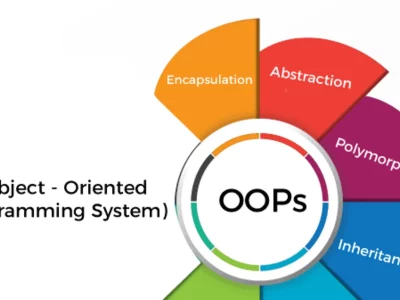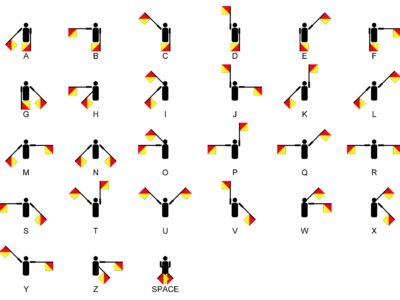What is CDMA (Code-Division Multiple Access)?
CDMA, At any rate, wireless communication has experienced tremendous transformation over the years and one technology that played an instrumental role in this development was Code-Division Multiple Access (CDMA). CDMA is an advanced digital mobile technology used extensively across satellite communication systems, mobile phones, and military applications;
At its root, CDMA can be traced back to the beginning of the 20th century when spread spectrum communications were first made public. But its development only truly began during the second decade into the second half of that same century – when Hollywood actress Hedy Lamarr and composer George Antheil introduced frequency jumping technology during World War II for U.S. Navy radio-controlled torpedoes.
CDMA as a commercial wireless technology can be traced back to Drs Irwin Jacobs and Andrew Viterbi, co-founders of Qualcomm (an influential communications firm). Beginning in the early 80s they conceptualized and filed patents that laid out fundamental ideas behind CDMA technology; eventually becoming available commercially for use across America in 1995 – marking a historic event in wireless communications history.
CDMA stands out as an unconventional method of digital modulation due to how it approaches sharing bandwidth among multiple users, unlike its rivals like Frequency Division Multiple Access (FDMA) and Time Division Multiple Access (TDMA). CDMA’s foundational principles include these factors.
1. Spread Spectrum
At its heart lies spread spectrum technology. In traditional communications systems, narrowband signals reside at one frequency band. But with CDMA technology each user’s signal is dispersed across a wider frequency band by multiplying his/her data signal with an exclusive pseudorandom code sequence multiplier which produces noise-like images perceived as noise by users who don’t possess that unique pseudorandom code sequence multiplier.
2. Orthogonality
At the core of CDMA’s success lies its use of orthogonal codes – mathematically independent codes which, when combined or combined over time, result in null results, thus enabling multiple CDMA signals to coexist within one frequency range without interfering with each other’s signals.
3. Variable Data Rate
CDMA offers users flexibility in terms of data rates. Users are able to send various amounts depending on their needs by changing the speed at which random codes are generated and multiplied with user’s signal; making this ideal for voice and data communications alike. This feature makes CDMA ideal for both data and voice transmission services.
4. Power Control
CDMA uses power controls in order to provide all users with equivalent levels of electricity from its main station, thus maintaining system capacity while decreasing disturbance among users.
After we understand how the CDMA operates on an academic level, let’s see it put to practice and see its applications for real-world situations.
1. CDMA as Part of Mobile Telephony
CDMA has gained immense recognition within mobile communications due to competition with other cellular technologies like GSM (Global System for Mobile Communication). Every subscriber in CDMA-based networks receives a pseudorandom number which serves as their unique code when exchanging or calling information or calls with another person – the base station then uses this same number on receiving devices to amplify or split out signals accordingly, ultimately recovering personal data of individual subscribers.
Also Read: online-instagram-download-access-your-favorite-photos-instantly
One advantage of CDMA mobile phone calls is their resistance to interference; CDMA signals appear as noise to people not using CDMA and do not cause significant problems for other users. Furthermore, its variable data rate capability provides efficient use of available bandwidth making CDMA ideal for high-speed voice data services and voice over IP services.
2. CDMA in Satellite Communication
CDMA technology has long been utilized in satellite-based communication systems to allow multiple users to utilize one frequency without creating interference due to signal distribution that uses specific codes; this approach proves especially advantageous when bandwidth resources are limited and utilized efficiently.
3. Military and Secure Communications mes CDMA’s inherent security properties make it the go-to choice for military operations and government communications requiring secure communications, with its pseudorandom code making decoding/intercepting signals difficult for unauthorized parties to decode/intercept signals being protected against decoding by non-authorized users through pseudorandom codes that make interceptions much harder for non-privileged users to decipher/intercept signals; such protection of sensitive data in military operations as well as government communication plays an essential part in maintaining confidentiality in security- related military operations/communications
Benefits of CDMA
CDMA provides numerous key benefits that have led to its wide use in various communications systems:
1. New Capacity
CDMA’s ability to accommodate multiple users on one channel without interfering with each other leads to greater capacities for communications systems – particularly important in densely-populated urban settings where lots of individuals require Internet access simultaneously.
2. Increased Security
CDMA provides superior levels of security that is almost impossible to breach – this makes CDMA an excellent solution for government and military communication applications alike.
3. Robustness to Interference
For non-CDMA users, CDMA signals appear as mere noise – this indicates they do not present significant interference to other communication technologies and thus make CDMA suitable for coexistence with wireless technologies such as LTE.
4. Variable Data Rates
CDMA offers variable data rates that enable users to transfer information at various speeds depending on their requirements, making it a flexible solution for data and voice communications.
5. Efficient Spectrum Utilization
Spreading signals across all frequencies allows for efficient spectrum utilization and is vital in optimizing Radio frequency spectrum resources.
Challenges and Limitations
CDMA offers many advantages; however, it has its share of limitations as well. Here are the challenges and shortcomings:
1. Near-Far Issue
The “near-far” problem arises when devices close to a station are able to transmit at higher rates than devices further away, possibly leading to interference among devices in the network and decreasing capacity of CDMA systems. Power control mechanisms exist for managing such issues but still present as potential liabilities in CDMA networks.
Also Read: hacker-who-are-hackers-what-is-hacking
2. Complexity
CDMA systems can be challenging to develop and implement when user numbers increase significantly. Coordinating orthogonal code use and managing power control require complex algorithmic models as well as hardware solutions.
3. Limited Network Compatibility
CDMA may not be as compatible with GSM than its rival, which may limit roaming capabilities when travelling internationally using CDMA-powered devices.
4. Spectrum Allocation
Allocating radio frequencies of CDMA systems requires extensive management efforts and resources, creating an increasingly complex process as wireless communications become an ever more prevalent service option. Spectrum allocation has thus become an increasing problem as demand grows for wireless services.
CDMA Technology from 2G through 5G
Since CDMA first emerged as an early 2-G solution for cell phones in 1992, its development and applications in 4G, 3G and now 5G networks has seen numerous enhancements of capacity, data transfer rates and overall network performance with every generation.
1. CDMA2000 (3G)
CDMA2000, commonly referred to by its 3-G designation, represented an impressive advancement of CDMA technology that provided greater data rates, better voice quality, and expanded services that required data services. CDMA2000 became widely adopted at the start of 2000 when GSM-based 3G networks integrated CDMA2000 networks into their infrastructures.
2. 4G LTE With the advent of 4G Long-Term Evolution networks, CDMA technology was exposed to increasing competition with alternatives like OFDMA (Orthogonal Frequency Division Multiple Access). As such, many CDMA-based companies converted over to LTE for improved quality and effectiveness.
3. 5G and Beyond
While CDMA technology still plays an integral part in some older networks, wireless has since shifted towards 5G networks as the key focus in wireless. 5G relies on OFDMA alongside other advanced techniques for high-speed communications while its legacy can still be found within specific aspects such as forward error correction or channel codification in 5G designs.
Conclusion
Codification Division Multiple Access (CDMA) has left an indelible mark on wireless communications technology. Utilizing spread spectrum principles such as orthogonality, pseudorandomness and codes has revolutionized communications in areas ranging from mobile telephony and satellite transmission through to military applications – while CDMA’s benefits of enhanced capacity, security and high resistance to interference make it an attractive technological solution.
Although CDMA has its limitations when it comes to evolving wireless technologies, its legacy remains as the basis of modern communications systems. Even as we move into 5G networks and beyond, its concepts and breakthroughs remain highly influential when designing cutting-edge wireless networks – guaranteeing its impact in communications will endure for many more years to come.










